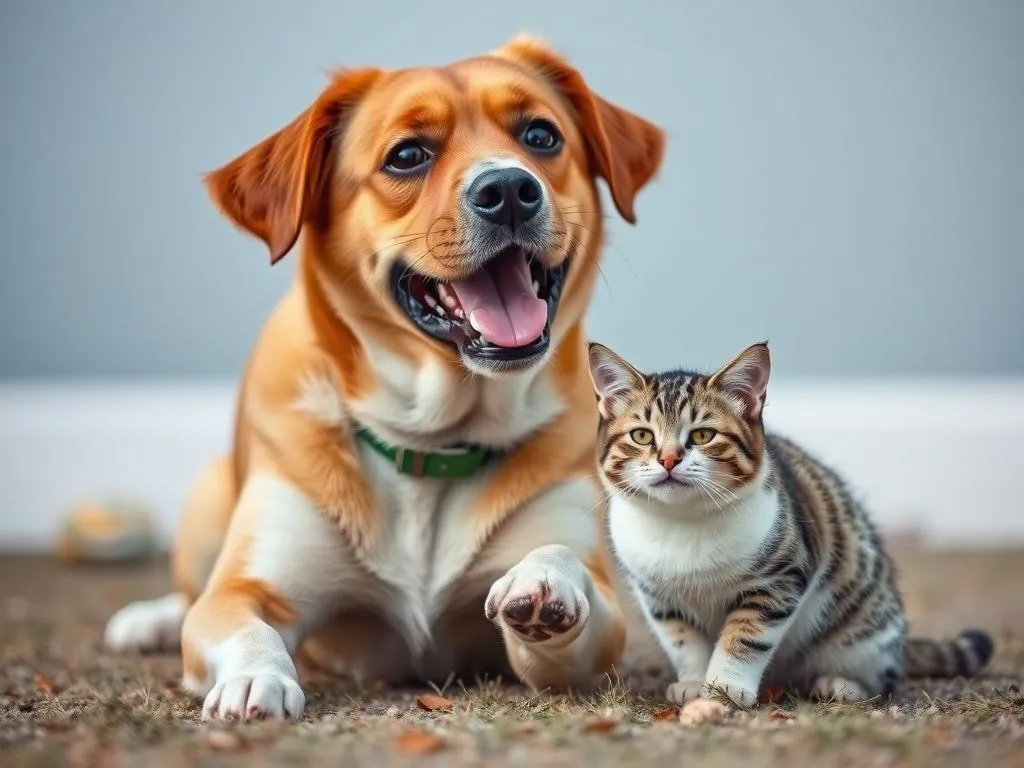
Dogs and cats have long been portrayed as natural enemies in popular culture, but the reality is often more nuanced. Many dog owners find themselves in the frustrating position of trying to manage a dog that can’t resist the urge to chase their feline housemate. Whether it’s an innocent game of tag or a more serious predatory instinct, understanding and addressing this behavior is crucial for the safety and well-being of both pets. In this guide, you will learn effective techniques, training tips, and insights into the underlying behaviors that lead to chasing.
Understanding the Behavior
Why Dogs Chase Cats
Dogs are instinctual creatures, and many of their behaviors stem from natural instincts. One of the primary reasons dogs chase cats is prey drive. This instinct is particularly strong in breeds that were originally developed for hunting or herding. Additionally, dogs often exhibit chasing behavior due to their social nature. They see the cat as a playmate or a target, which can lead to playful yet potentially harmful chases.
Past experiences can also play a role. If a dog has had a positive or exciting encounter with a cat—such as a playful chase during puppyhood—they may seek to replicate that experience, leading to a repetitive chasing behavior.
Signs of Chasing Behavior
Recognizing the signs of chasing behavior can help you intervene before a chase escalates. Look for specific body language cues in your dog. Common indicators include a stiffened body posture, intense focus on the cat, and a wagging tail that may denote excitement rather than happiness.
Vocalizations such as barking or growling are other signs that a chase may occur. Context is also vital; chasing may happen more frequently in certain environments, like outdoors where the dog feels free and excited.
Assessing the Situation
Identifying Triggers
To effectively curb chasing behavior, you first need to identify what triggers it. Common triggers include sudden movements from the cat, loud noises, or even playful engagement from the cat itself. Observing the interactions between your dog and cat can provide valuable insights. Keeping a journal of incidents can help you pinpoint patterns and specific triggers that lead to chasing.
Evaluating Your Dog’s Temperament
Different dog breeds have varying predispositions toward chasing. For example, breeds like Greyhounds and Border Collies are known for their chasing instincts, while others may have a more laid-back approach. Assess your dog’s energy levels and overall behavior. An overly energetic dog might be more prone to chasing, especially if they lack sufficient mental and physical stimulation.
Training Techniques to Stop Chasing
Basic Commands
Before attempting more advanced techniques, it’s essential to ensure your dog has a solid grasp of basic obedience training. Commands such as “Sit,” “Stay,” and “Come” are foundational. These commands can be lifesavers in moments when your dog’s instinct kicks in. The more reliable your dog is with these commands, the easier it will be to redirect their attention when necessary.
Redirecting Attention
One effective strategy for stopping your dog from chasing your cat is redirecting their attention. Use toys, treats, or even a favorite game to divert your dog’s focus away from the cat. When you notice the dog getting fixated on the cat, engage them with a toy or call them to you with a treat in hand. This strategy not only interrupts the chase but also reinforces positive behavior.
Positive Reinforcement
Positive reinforcement is a powerful training tool. When your dog ignores the cat or remains calm in their presence, reward them with treats or praise. This helps create a positive association with the cat’s presence and reinforces the desired behavior. Techniques such as clicker training can be particularly effective, allowing you to mark good behavior instantly.
Controlled Introductions
When introducing your dog to your cat, doing so in a controlled manner is crucial. Gradually introduce them to each other while keeping the dog on a leash. This way, you can maintain control and prevent any unwanted chasing. Using barriers like baby gates can also create a safe space for both pets during initial introductions, allowing them to observe each other without direct interaction.
Creating a Safe Environment
Physical Barriers
Creating physical barriers can significantly reduce the chances of chasing. Utilize baby gates or pet doors that restrict access to certain areas of the house. Designating separate spaces for your dog and cat can also help manage their interactions more effectively.
Safe Spaces for Your Cat
Make sure your cat has designated safe spaces where they can escape if they feel threatened. High perches, shelves, or hiding spots can provide your cat with a sense of security. Ensure that these areas are easily accessible and that the cat knows they can retreat there whenever they feel the need.
Professional Help
When to Seek a Trainer
If you find that self-training isn’t effective, it may be time to seek professional help. Signs that you should consult a trainer include repeated incidents of chasing, aggressive behavior, or your dog’s inability to respond to commands. A professional can provide tailored strategies and insights that fit your specific situation.
Choosing the Right Trainer
When searching for a trainer, look for someone with relevant credentials and experience in behavioral issues. Ask questions during an initial consultation to gauge their approach and philosophy. It’s essential to find a trainer who aligns with your training goals and is familiar with managing dog-cat dynamics.
Long-Term Strategies for Prevention
Consistency is Key
One of the most critical components of successful training is consistency. Establish a routine that incorporates regular training sessions. Keeping these sessions structured and consistent helps reinforce learning and makes it easier for your dog to understand what is expected of them.
Monitoring Progress
Tracking your dog’s progress is essential for understanding what works and what doesn’t. Keep a record of improvements and setbacks to help you adjust your training techniques accordingly. If a particular method isn’t yielding results, don’t hesitate to try something new.
Continuing Education
Training doesn’t stop once you’ve achieved your goals. Consider resources for ongoing education, such as books, online courses, or workshops. Joining community support groups of other pet owners can also provide additional insights and experiences that can further aid your training efforts.
Conclusion
Addressing the issue of how to stop your dog from chasing your cat requires patience, understanding, and dedication. By implementing effective training techniques, creating a safe environment, and knowing when to seek professional help, you can foster a harmonious living situation for both your dog and cat. With time and consistent effort, it is entirely possible to train your dog to coexist peacefully with their feline counterpart. Your commitment to their well-being will pay off in the form of a safer, happier home for all.









